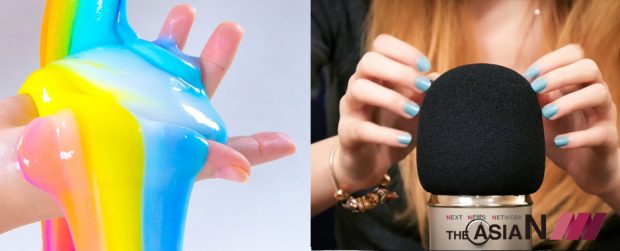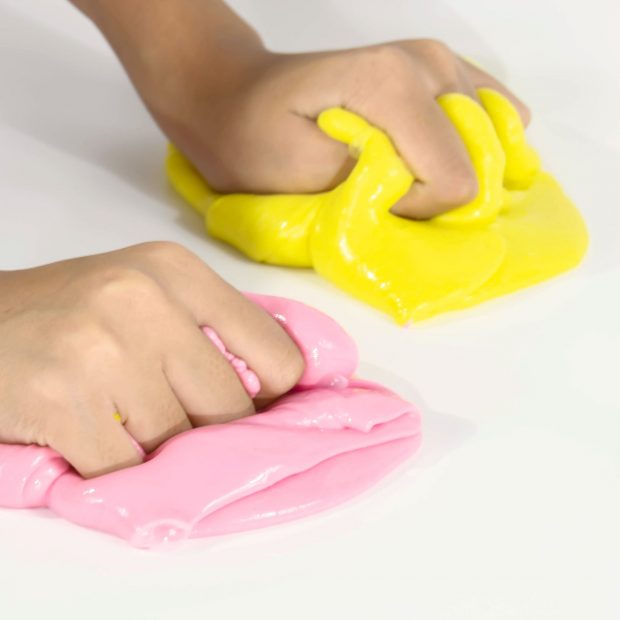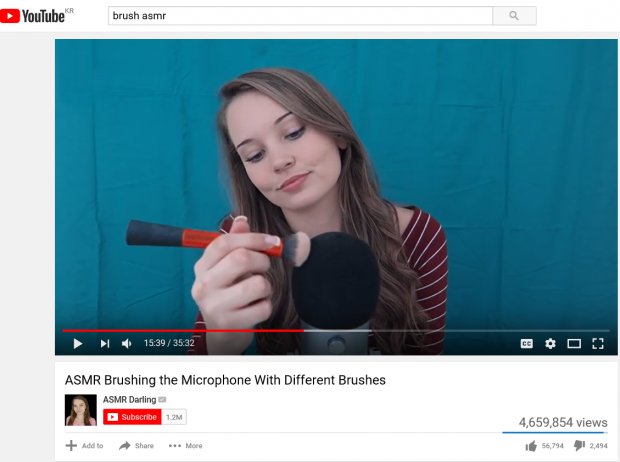
Relaxing Sensory Media for the Overstressed Millennial
Relaxing Sensory Media for the Overstressed Millennial
As a girl, I often struggled with bouts of insomnia. Sleep came slowly, typically after an hour of lying awake in bed, and no amount of tossing and turning would help. Now, as an adult, insomnia still keeps me wide awake in the evenings even though I am exhausted from a long and stressful day.
It was on one of those sleepless nights that I that saw them: videos of glittery blobs of slime with little fingers poking and squishing it for minutes on end, and then a little while later, videos of people making strange mouth noises in front of microphones as if they were kissing me good night.
Basically, they were clips of people doing nothing in particular, just pushing and pulling on slime and creating repetitive noises into microphones on high volume, but they were just so weirdly captivating that I couldn’t take my eyes, or my ears, away. It was all so satisfying…and I was asleep.
Without thinking, I had stumbled upon the world of slime and ASMR. I was so intrigued that I would make my own slime and then create videos to upload on my Instagram account, but the videos that other “professionals” made were always more appealing and the sounds always better.
I don’t know exactly when it started, but at a certain point, relaxation could come straight from our smartphones and they came in the form of digitally-enhanced sensory experiences. You had videos of people pulling on slime, squeezing and popping the weirdly satisfying blob, and then others who were breathing, eating, and whispering into amplified microphones—all in the name rest and relaxation.
Just like that, sensory digital media became something of a 21st century subculture with kids and young adults crazy over sensations felt across cyberspace, and the two most widely viewed sensory media were slime and ASMR.
By now, some of you are confused, so it seems appropriate to give an overview of the slime and ASMR phenomenon sweeping our media platforms:
Slime-gooey sensation
Simply put, it’s glue that has been congealed (hardened). When you take any liquid solution that contains boric acid (common in contact lens solutions) and combine that with glue, the result is a slimy and gooey substance that, although sticky, doesn’t make too big of a mess.
For all that is known of slime, it’s been around since the late 1900s but recently resurfaced on Social Networking Service (SNS) platforms as videos and how-to-make tutorials. The craze began taking momentum early 2017 with a growing number of Instagram users posting homemade slime videos, poking at the goo to make the satisfactory popping sound.
By mid-June, over 3 million Instagram users had uploaded their pictures and clips of slime that ranged from glittery ones to buttery slime made with the addition of shaving cream. Those who were more experimental added beads and shiny pearls to make their slime “extra glamorous”. On YouTube, search “slime” and you’ll find 6 million results—some with over 20 million views.
You might ask what the big deal is? Why is every going nuts over a ball of glue? But as you speak, young adults around the world have now gone on to make large amounts of cash with those balls of glue. Kids as young as thirteen have begun selling their DIY slime through Instagram and some are making over $3000 USD a month (TIME).
Karina Garcia (U.S.), one of the first slime entrepreneurs to make a successful career out of making and selling slime, is only 23 years-old and has built a slime empire for herself with a 6-figure monthly salary. Much of her income comes from advertising revenue from platforms like YouTube and Instagram. In an interview with CNBC news Garcia said, “I recently bought a house (from slime money), and my mom laughs about it.”
“Laugh” is the right word, because as ridiculous as it sounds, slime is literally creating CEOs out of young people and it’s still a growing business—even in Asia. In Hong Kong, some teens make HK$1600 (approx. 205 USD) per week by selling slime at the nine-story Dragon Centre shopping mall in their own private cubicles.
ASMR-tingling pleasures
Short for Autonomous Sensory Meridian Response, ASMR is just a hard word for a pleasurable tingling at the back of the ears from certain auditory stimulus.
The physical sensation of ASMR is compared to having one’s hair combined by one’s mother, or being whispered a secret by someone special. And as such, some have called ASMR a type of “brain orgasm” and ASMR videos as “brain porn”. While the experience is not a sexual one, ASMR videos seem to have an immediate calming and sedative effect on viewers; that’s why many have made it a pre-bed ritual to doze off to ASMR clips.
The videos have been around the web since as early as 2008, and in them, a person simply makes sounds into a high-quality microphone. They use just about anything to create noise: makeup brushes, water droppers, animals—some even eat in front of the mics. In the end, whatever the object, the amplified noise, when repeated, has somewhat of a hypnotic effect and before you know it, you’re already asleep.
First-time viewers are usually put off by the whispered talk and mouth and saliva sounds that the video-makers make, but that disgust is soon replaced by an intrigue over why something this weird could sound so good.
Korea’s slime and ASMR
In the end, they’re one and the same: the slime and brushing of microphones, all are intended to evoke a therapeutic sense of relaxation by stimulating one’s audio-visual nerves. And nowhere has this phenomenon taken quite the same shape as it has in South Korea.
Koreans love it all, the slime and the ASMR. Korean followers of YouTubers are religious in their viewing, patiently waiting every Sunday evening for ‘ASMRtists’ like Dana to upload her newest video. Moreover, slime has a particular nickname in Korea called “liquid monster” and it is used like an endearment in Korean slime communities.
Im Sae-mi, CEO of Slime Korea said that slime sales skyrocketed when high-profile celebrities like IU (singer) uploaded Instagram clips of slime on their own pages.
“It’s gotten to the point where we’re limiting the number of orders per person because we can’t keep up with the demand” Im said in an interview with The Korea Herald.
While many have said Korea’s special love for slime and ASMR is because Koreans have a tendency to copy one another (especially the latest fads), others point to dangerous levels of stress and anxiety that is causing more young girls and boys to find comfort in online sensory media.
The National Center for Biotechnology Information (NCBI) has found approximately 17% of Koreans to be suffering from insomnia and other forms of sleep deprivation as of 2015. While most are in need of medical treatment, the NCBI also found that few Koreans seek medical help.
Maybe it’s because of the competitive Korean society; students scrambling to enter the best schools with a perfect suneung score and college graduates anxiously preparing to land the prestigious jobs. When there really is no way of release outside in the real world, cyberspace seems to be quick and easy, and all at once, safer alternative.
Relaxation through media overload?
The underside of the slime and ASMR craze is whether or not these modes of relaxation are in fact giving users true rest. We are constantly being bombarded by visual and electronic stimuli, so it’s questionable whether more stimuli from sensory media like ASMR videos would be beneficial.
Could it be that social media is actually making us more interested but all the more tired? And are the relaxing videos only acting as placebos that prevent us from tackling the real cause of our stress?
The convenience of de-stressing oneself by a numbing process of video-watching can be good in the short term, but the consequence of avoiding the true issue at hand continues a vicious cycle of exhaustion giving birth to more exhaustion. We are taught to face our problems, not forget them, but social media has a way of giving us an immediate sense of relief. So much so that we cannot remember why it is we are stressed to begin with. It’s a question worth asking, but we are still in the stage of understanding social media more.
As of yet, there hasn’t been enough research on this issue to make any decisive claim for or against slime and ASMR, but as with anything completely new, a healthy dose of skepticism should follow the excitement. As society embraces sensory media as a new business platform for creative minds, it is also important to be cautious when cyberspace begins to be more interesting and therapeutic than reality itself.
Bearing in mind that digital media and networking platforms are simply tools designed to make our lives easier, we remember that the real world has so much more to offer in nature and in humans than our smartphones could ever dream of.





